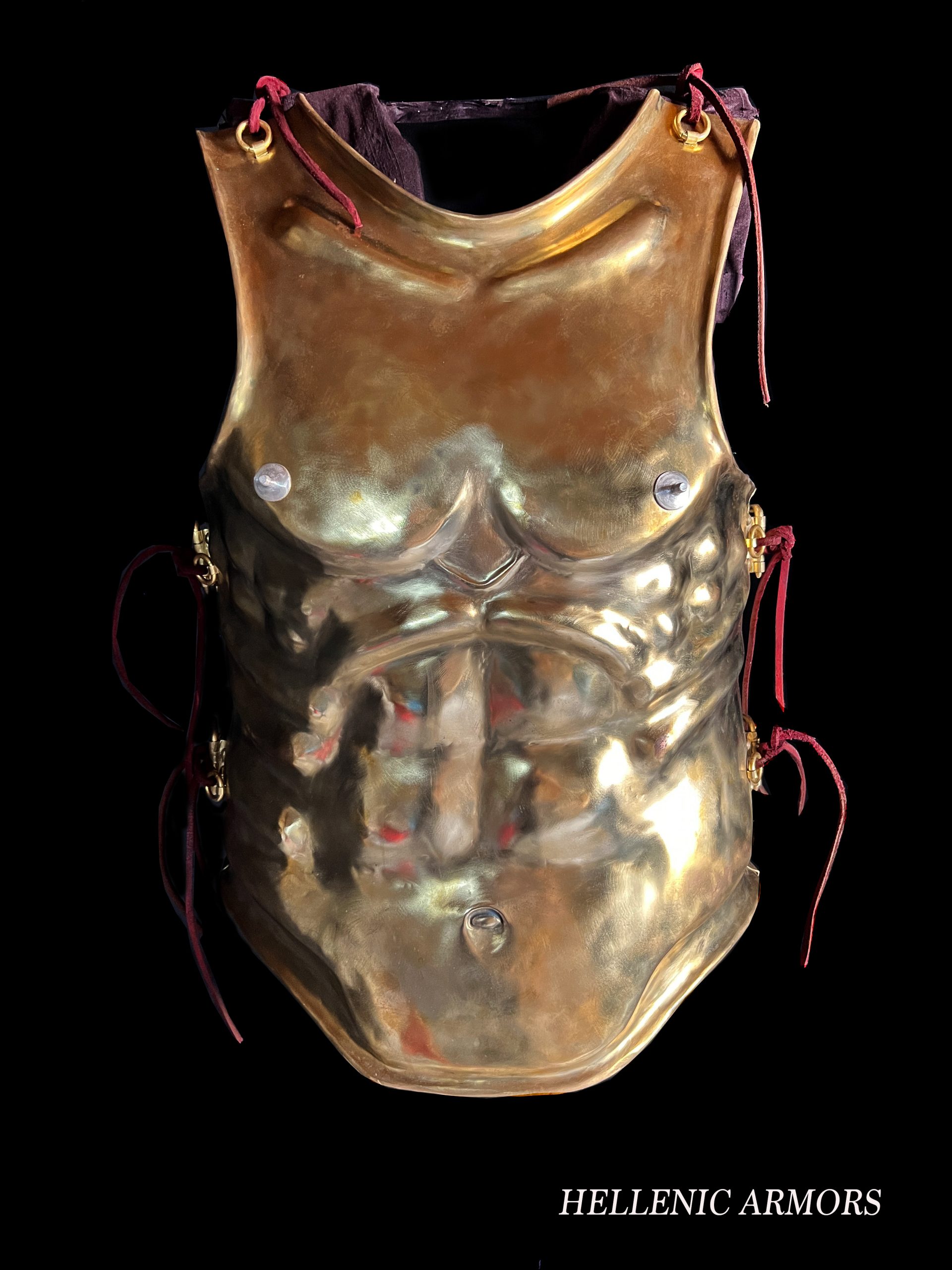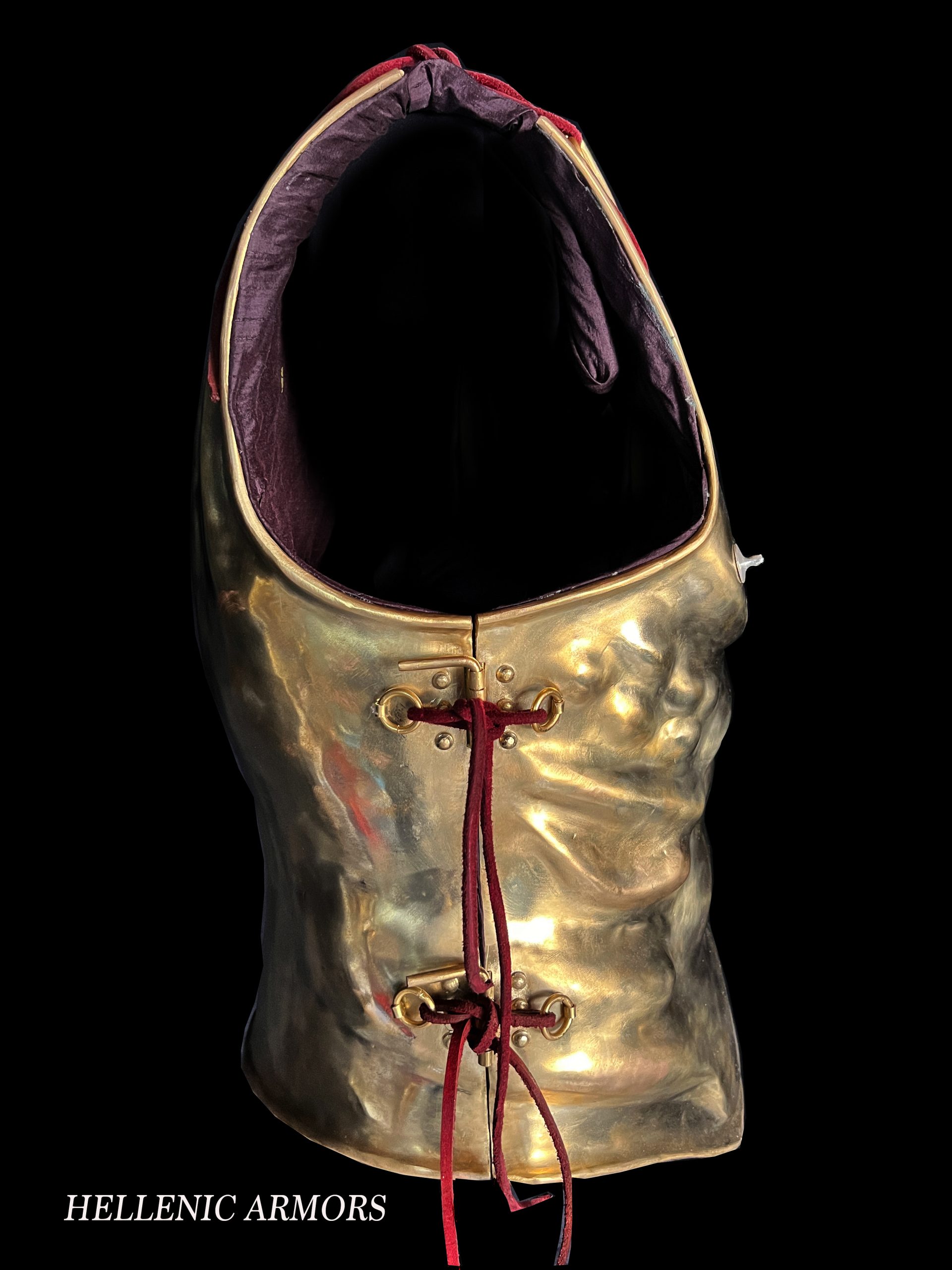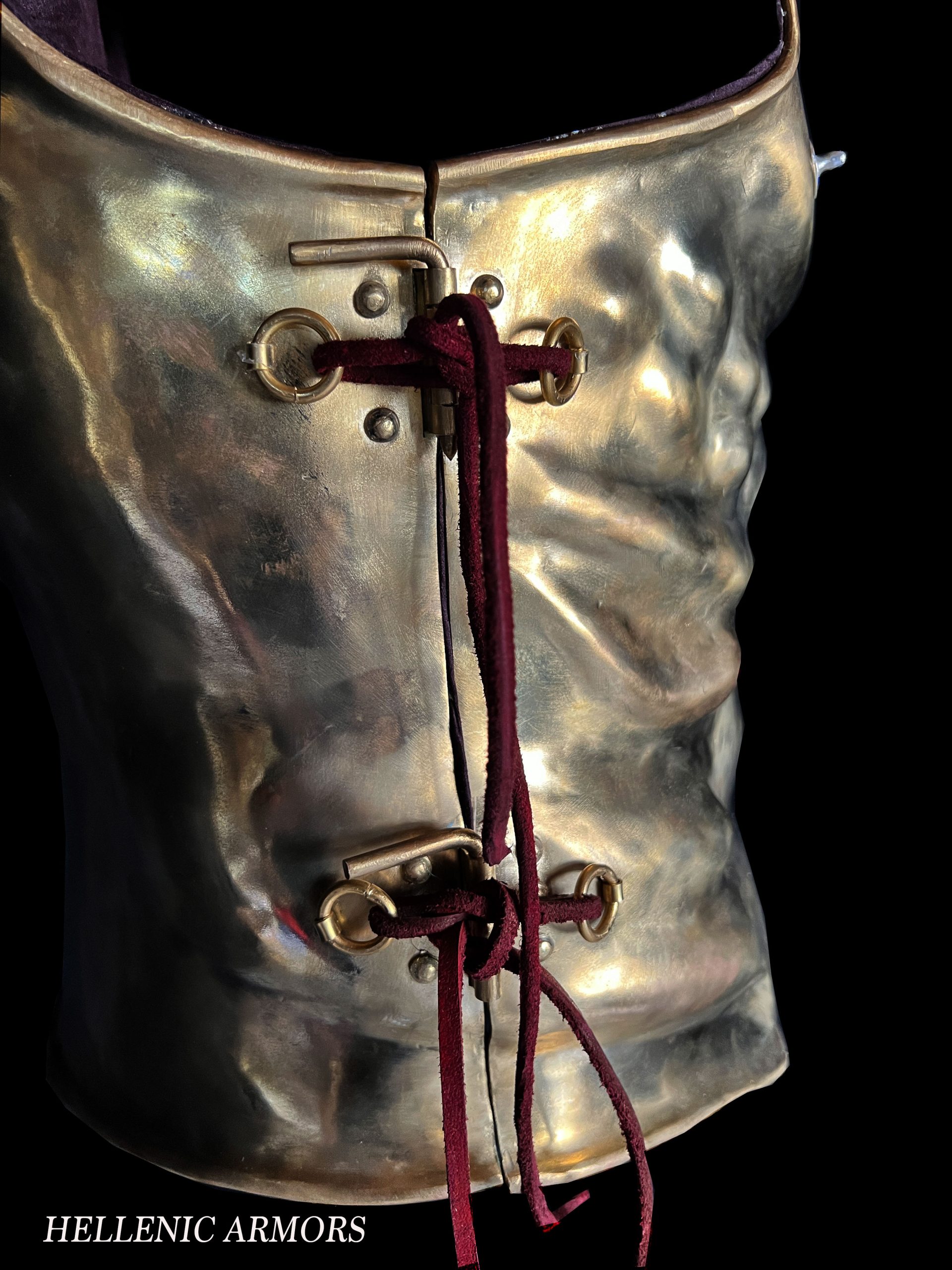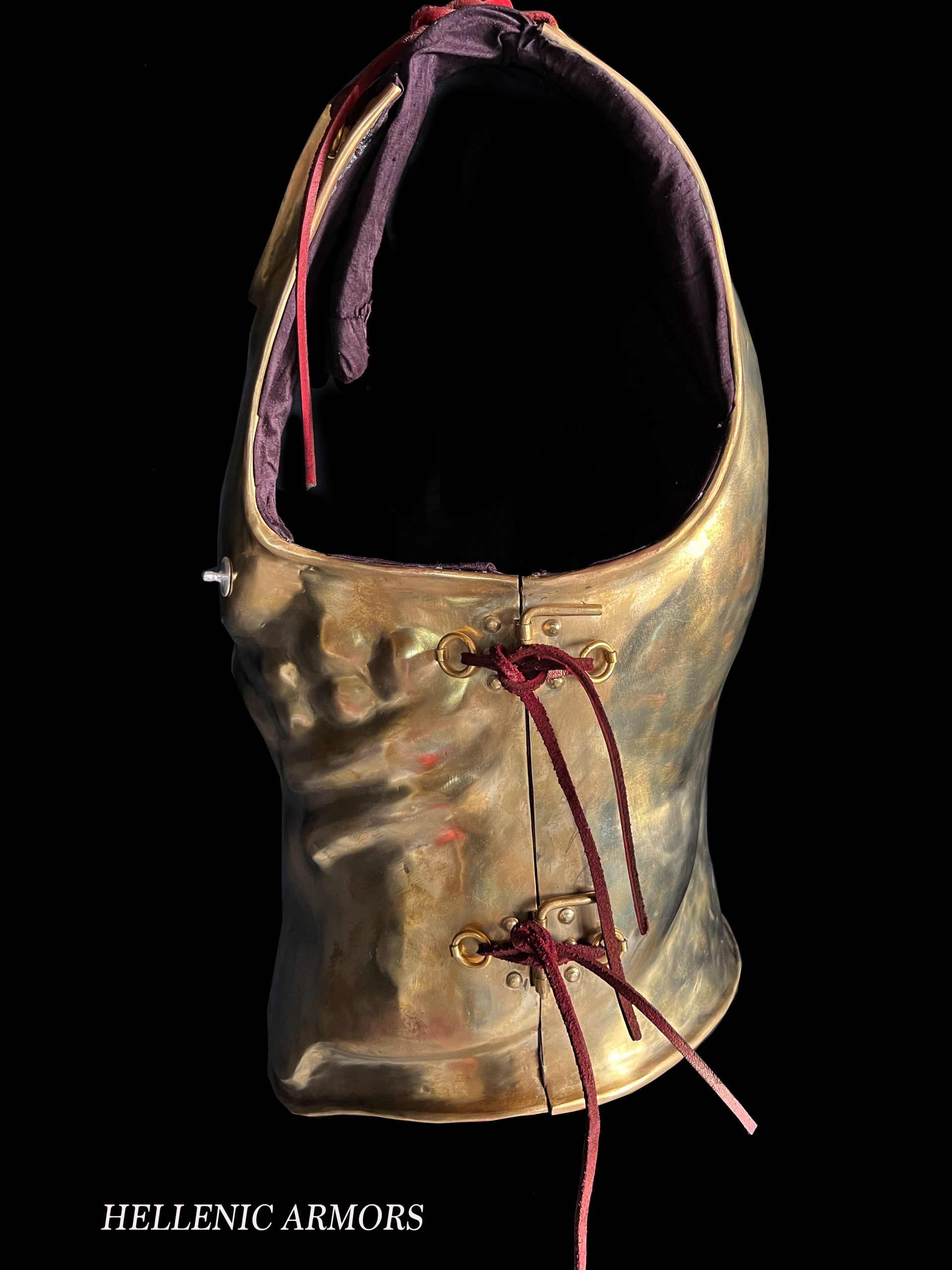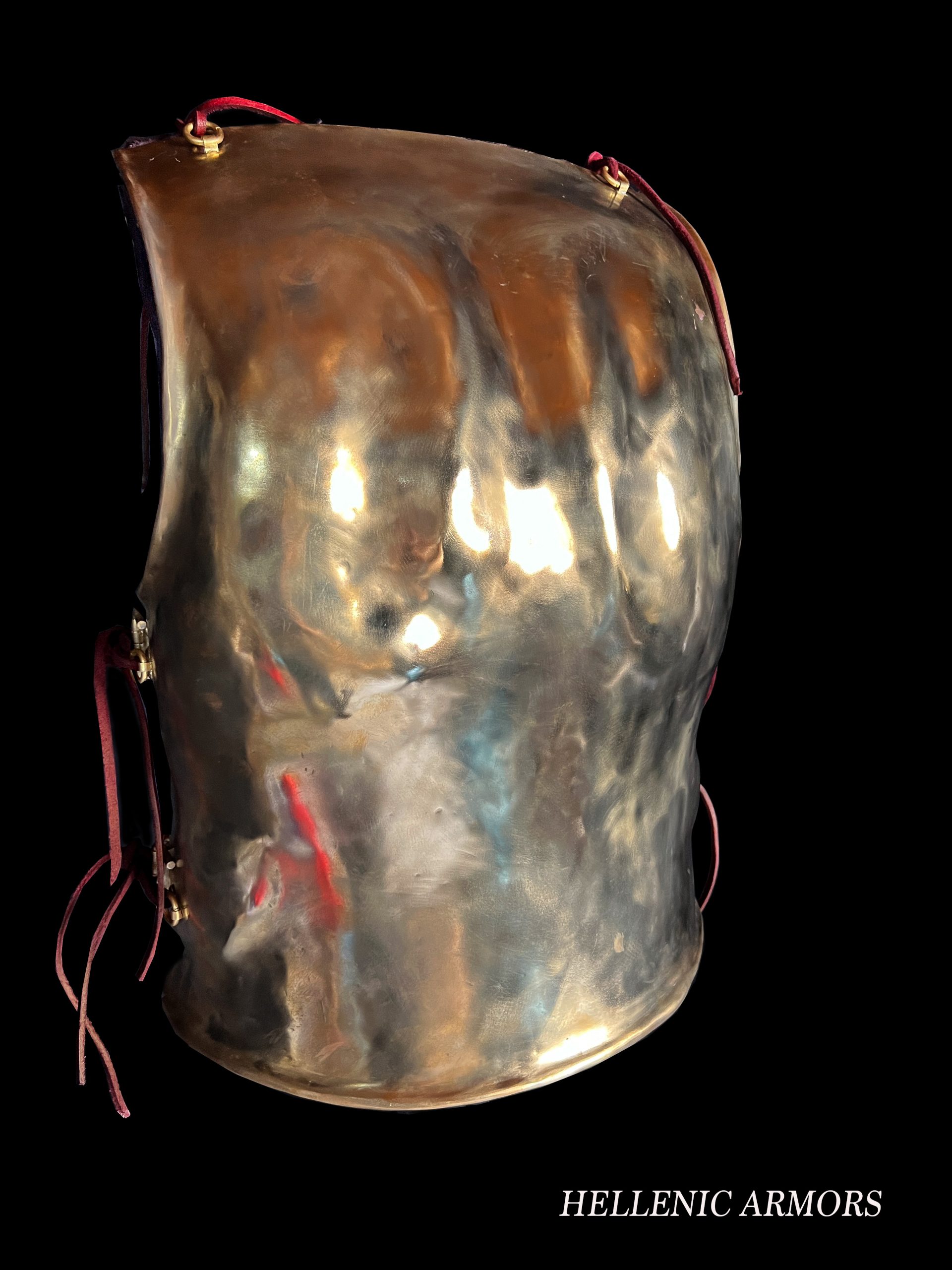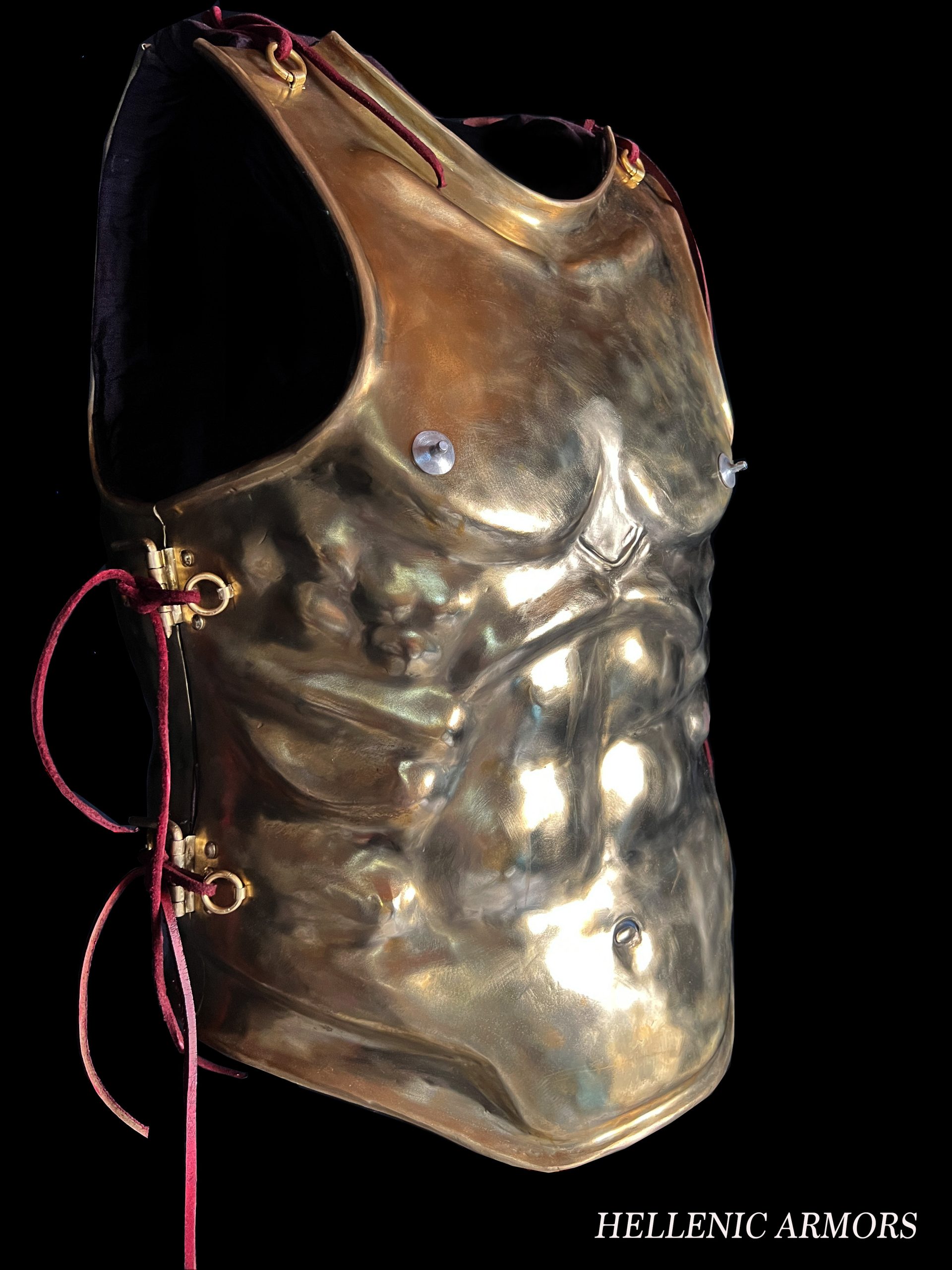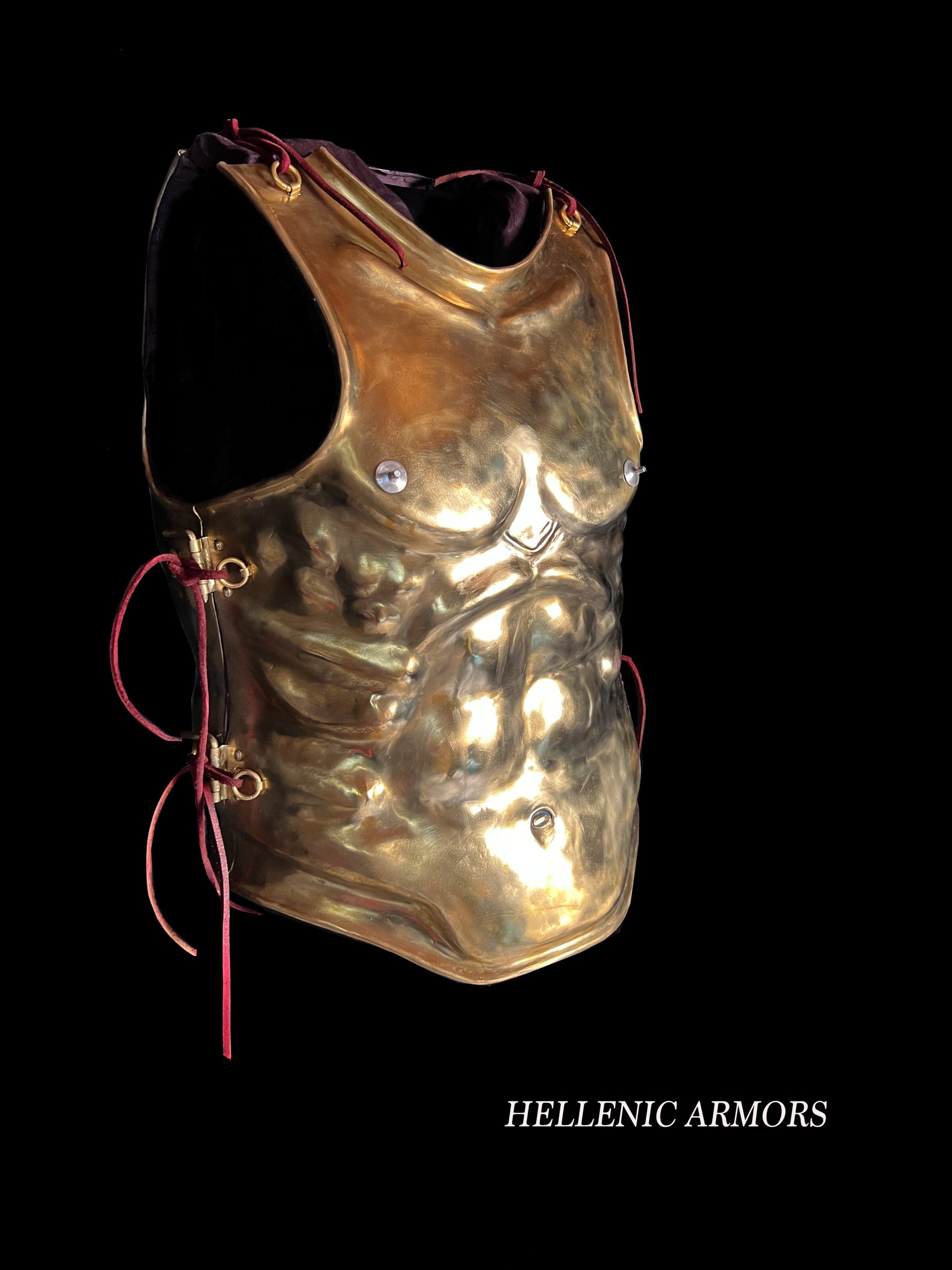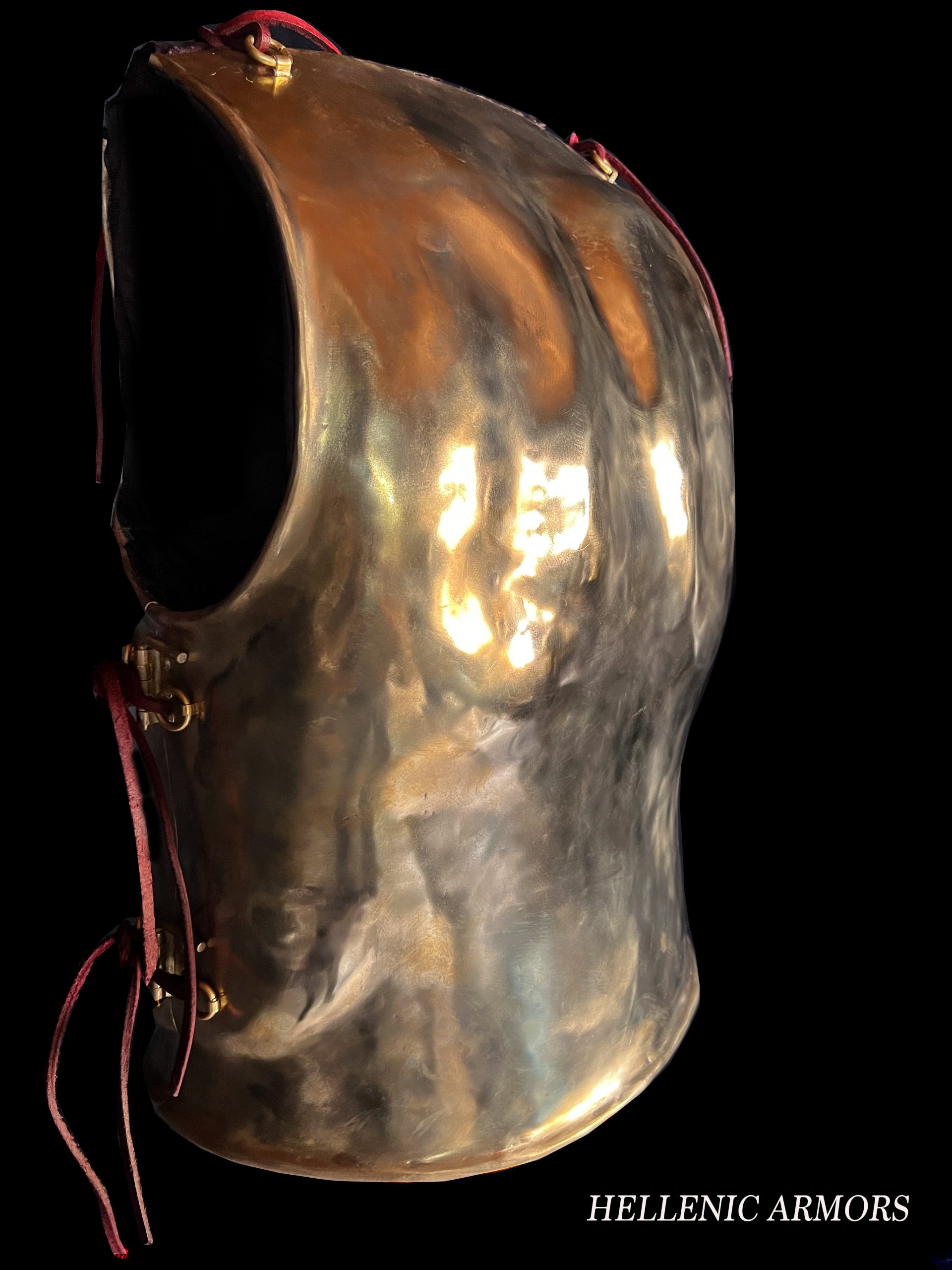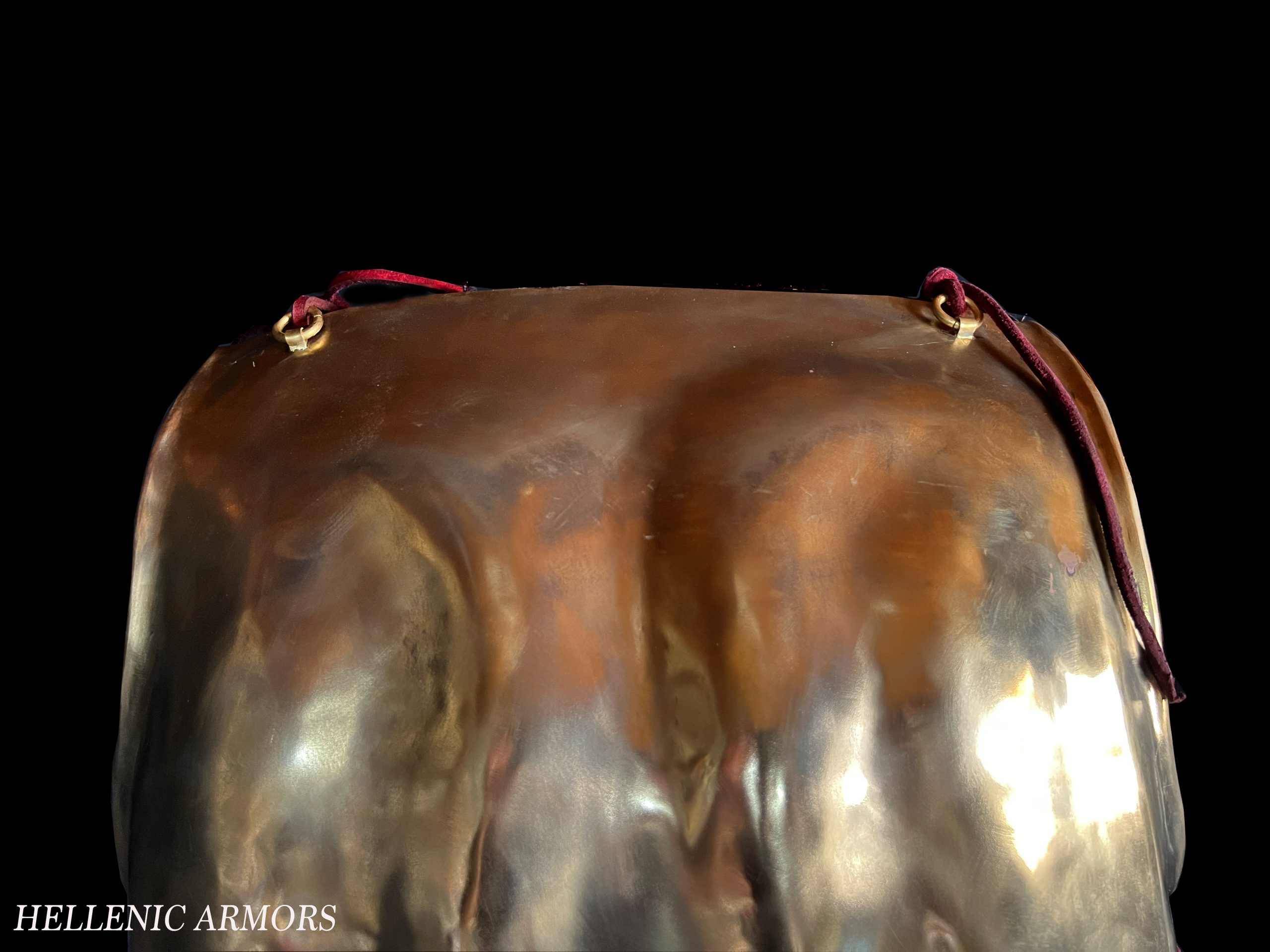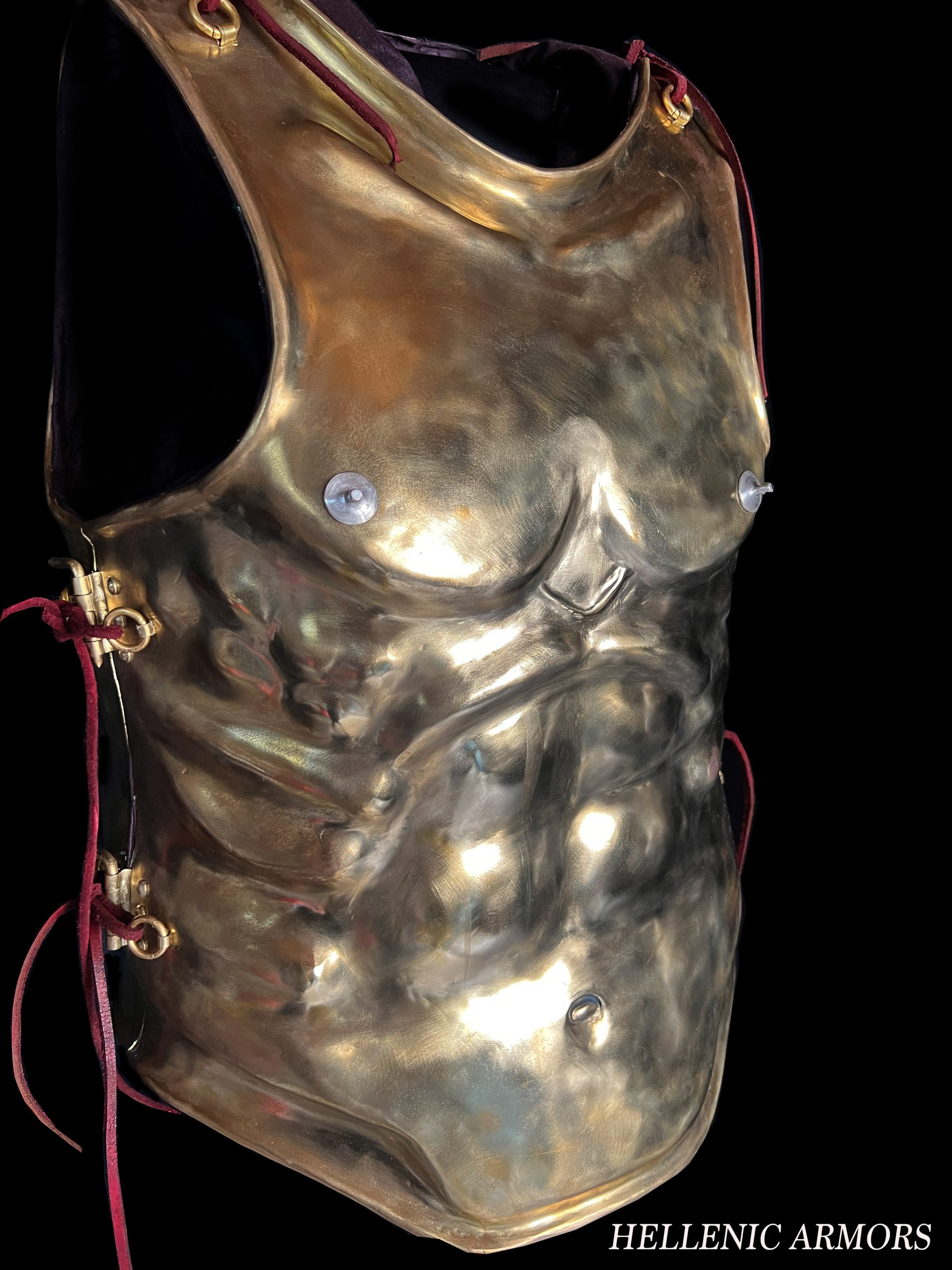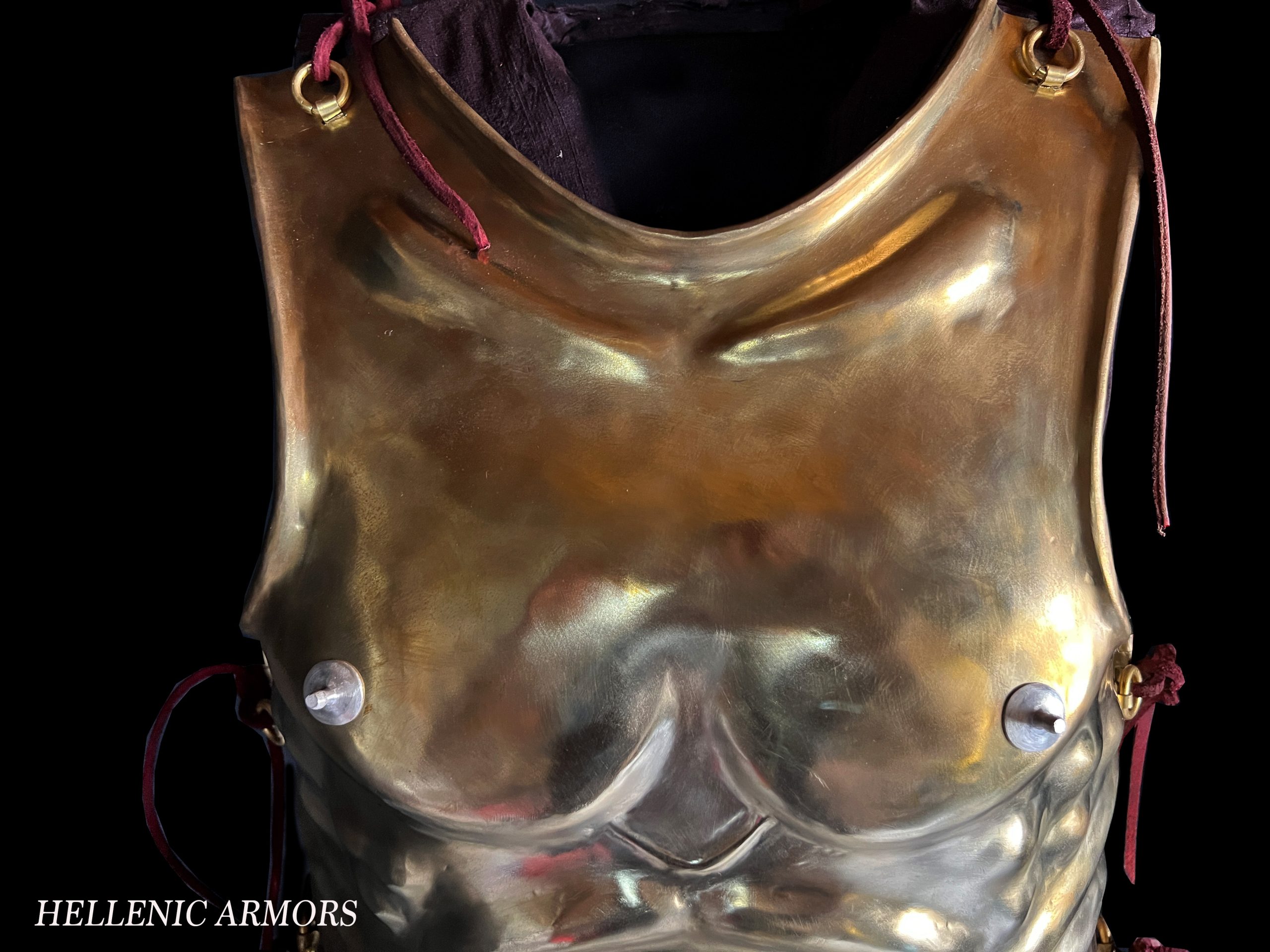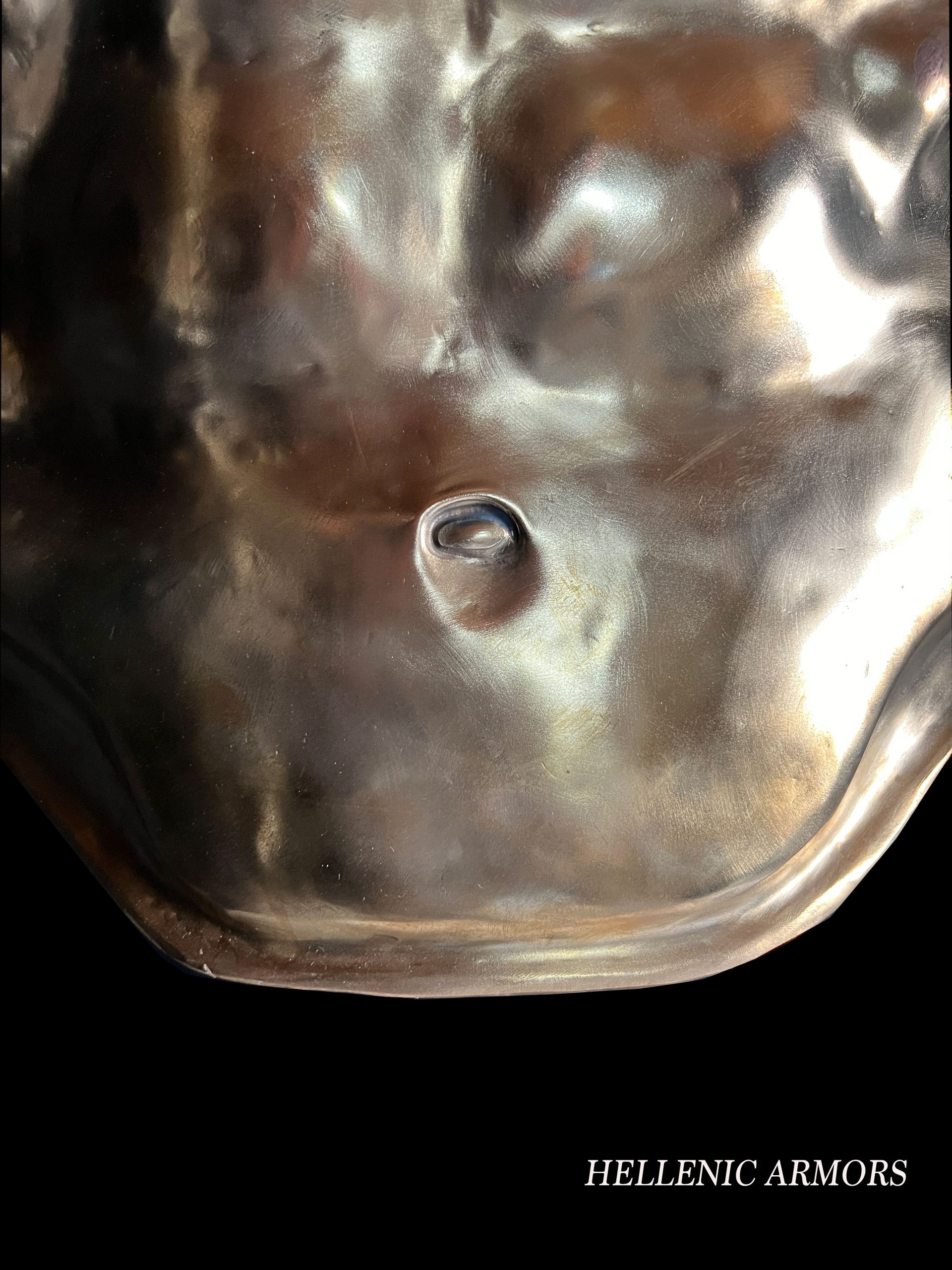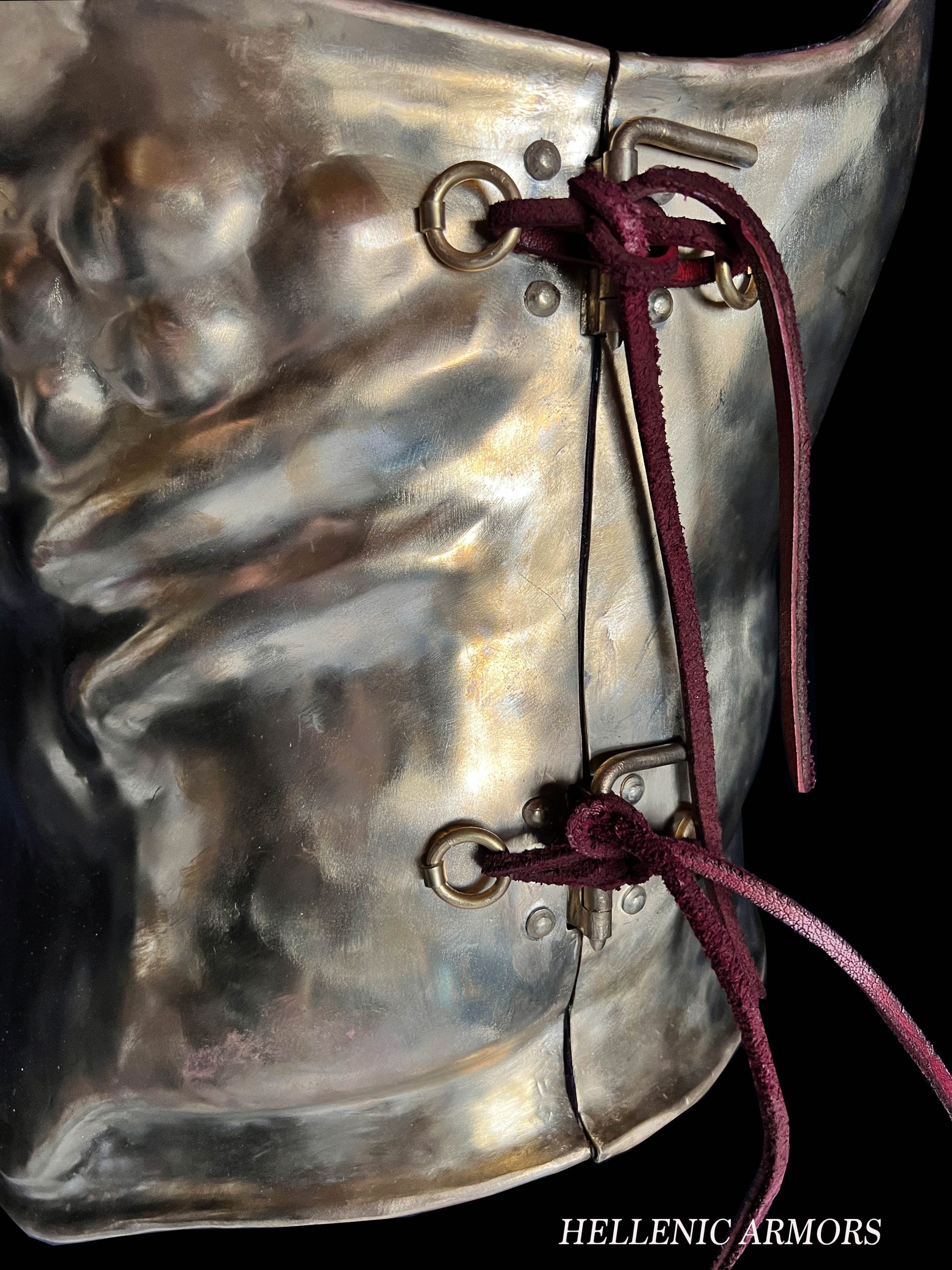Ancient Greek Armors
Μuscle cuirass (from British Museum)
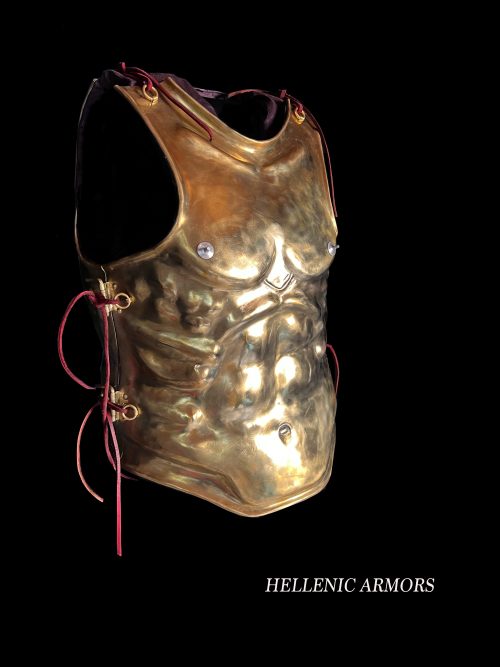
The recreation has been based on a mostly intact archaeological find from the Apulia (“Magna Graecia”) region in Italy,it’s represents a high level of aesthetics and practicality.Most probably made in a Greek workshop between 4th-3th century BC and today it is on display in the British Museum of London (Βritish Museum:2846) .
The breast plate possesses all the anatomical details of an athletic male torso: pectoral muscles, abdominal muscles, collarbones, elaborate navel and nipples (made of silver). Also,all the edges of the bronze sheets around the arms and neck cutouts are turned inward for reasons of aesthetics, protection and comfort.
The two halves ( the pectoral and the dorsal plate) are held together with two pairs of riveted tubular hinges under each armpits area and two pairs of ring/leather fastening mechanism on shoulder areas. Internally, both sides were covered with thick, soft organic elements (wool&textile) in order to protect the hoplite’s skin from abrasion, heat and of course for effective stabilization of the cuirass on the human torso. Τhe bronze sheets (1,2mm thickness) are hammered over fire and gradually modeled with the anatomical naturalistic or idealistic details of an athletic male physique


